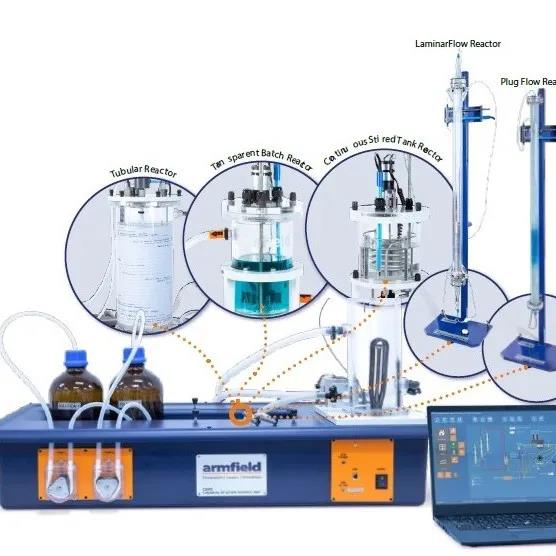CERa-MKII – Gaseous Diffusion Coefficient Apparatus
Description
CERa-MKII apparatus for investigation of mass transfer and gaseous diffusion has traditionally used a capillary tube in a hot water bath, with a travelling microscope used to measure the rate of diffusion over a period of time. Although capable of giving good results, this type of apparatus was not without its disadvantages, particularly ease of use.
Armfield have yet again introduced a radical alternative to the traditional methods, utilising the benefits of modern computer compatible microscopy, producing a novel system with a large number of benefits.
A small quantity of the volatile liquid to be investigated is placed in a capillary tube, which is positioned in a heated metal block. The block is heated by an electric cartridge heater and kept at a constant temperature using an electronic control loop.
A stream of air is passed across the top of the capillary tube, with a stationary layer of air above the liquid surface, creating a partial pressure difference between the liquid surface and the flowing air stream. As vapour diffuses from the liquid into the air stream, the amount of liquid in the tube reduces and the phase boundary between the liquid and the air drops. Measurement of how this phase boundary changes with time enables the molar mass transfer rate to be determined.
A slot in the heater block enables the phase boundary to be observed using a high definition microscope. This microscope produces high definition images onto a standard windows computer (not supplied). The software provided with this microscope includes highly accurate measurement and an automated time lapse facility (either as video or multiple still images).
Experimental Content
-
To determine the diffusion coefficient of a gas by evaporation from a liquid surface
-
Direct measurement of mass transfer rates in the absence of convective effects
-
Use of gas laws to calculate concentration differences in terms of partial pressures
-
Use of Fick’s law to measure diffusion coefficients in the presence of a stationary gas
-
Measurement of the effect of temperature on diffusion coefficients
-
Investigation into diffusion coefficients of alternative fluids
-
Gaining familiarity with the use of laboratory instruments to achieve accurate measurements of data required for industrial process design
CERb – Liquid Diffusion Coefficient Apparatus
Description
The liquid diffusivities coefficient apparatus laboratory equipment has been designed to enable measurement of molecular diffuivities relating to an equimolar counter-diffusion process and in so doing, familiarise students with the basic notions of mass transfer theory.
Armfield has developed a unique diffusion cell which overcomes the traditional problem of slow diffusion rates in liquids requiring long observation times but without sacrificing accuracy or introducing convective effects. Essentially, the cell consists of a honeycomb of accurately dimensioned capillaries positioned between two liquids of differing concentration of the solute, whose diffusion coefficient is to be determined.
In practice, a small volume of concentrated solution is placed on one side of the honeycomb, whilst the other side consists initially of a large volume of pure solvent (water). As diffusion of the solute occurs, the concentration within the larger volume increases and is monitored with a conductivity sensor and meter.
The mixture is continuously stirred with a magnetic stirrer to ensure uniform concentration within the bulk liquid.
Whilst the conductivity sensor may be readily calibrated for any required aqueous system, for introductory studies dilute solutions of sodium chloride are recommended, for which conductivity data is provided.
Experimental Content
-
Accurate measurement of mass transfer rates in the absence of
convective effects
-
Use of Fick’s law to deduce diffusion coefficients from measurements
of mass transfer rate and concentration difference
-
Simple analysis of a first-order unsteady state process effect of
concentration on diffusion coefficients
-
To determine the diffusion coefficient of 1M NaCl solution
-
Gaining familiarity with the use of laboratory instruments to achieve
accurate measurements of data required for industrial process design
Download
相關(guān)標(biāo)簽
Armfield,CERa-MKII&CERb, Diffusion Coefficient Apparatus

 Enquiry:hkmarketing@epc.com.hk
Enquiry:hkmarketing@epc.com.hk  Whatsapp Enquiry: +85261990717
Whatsapp Enquiry: +85261990717












